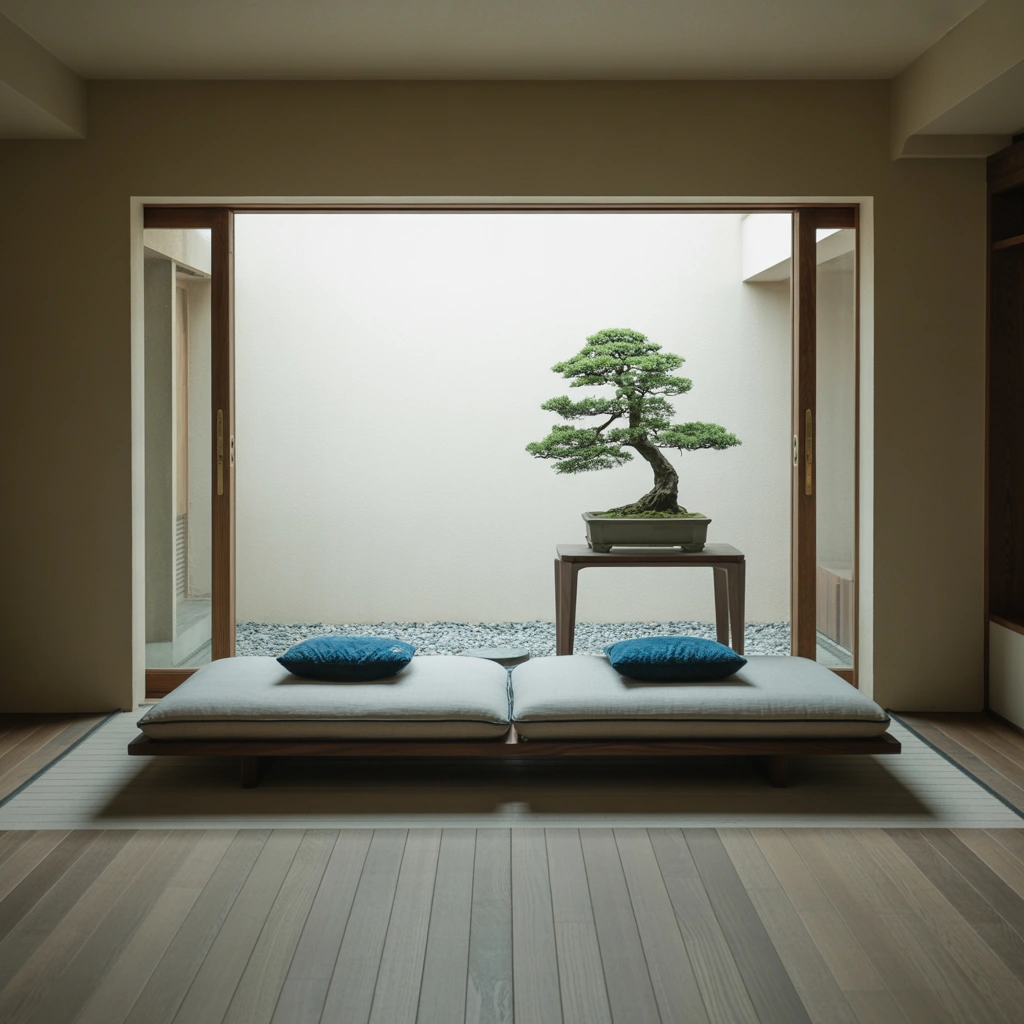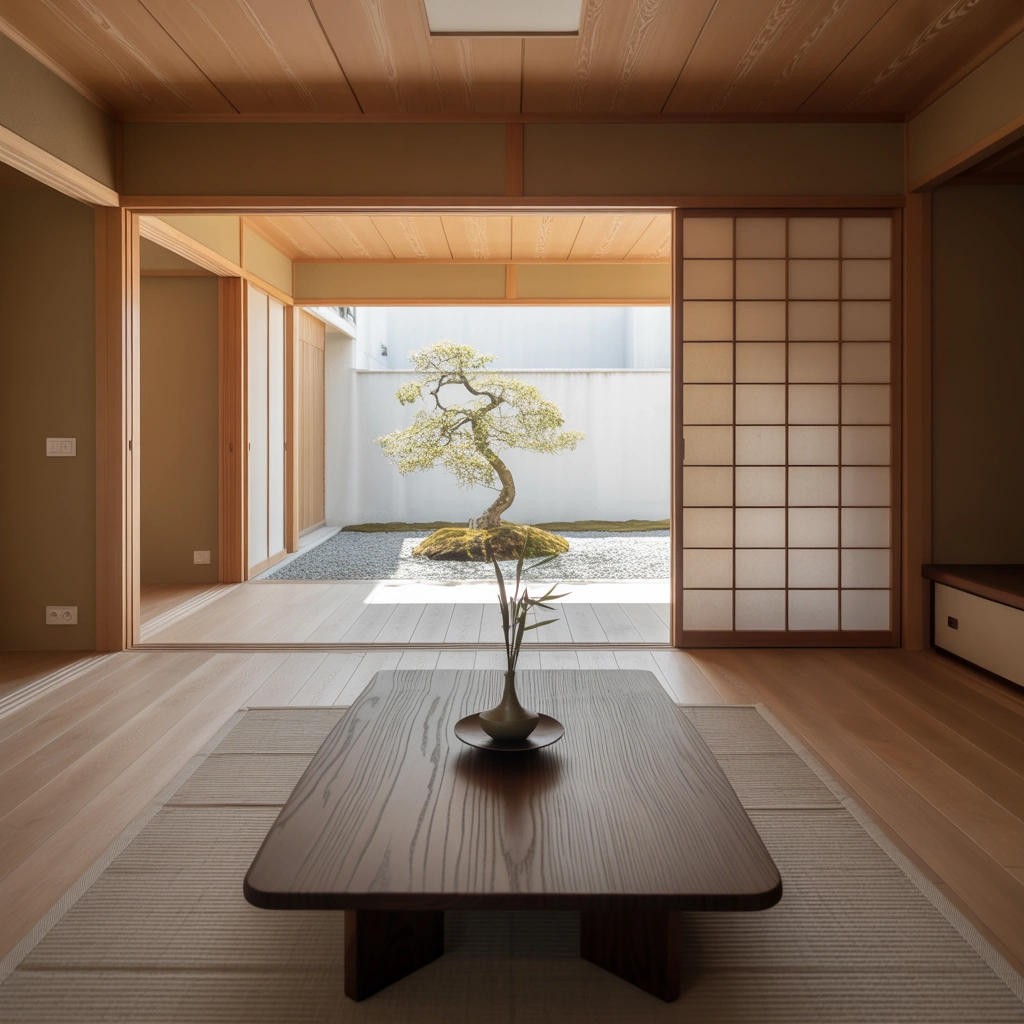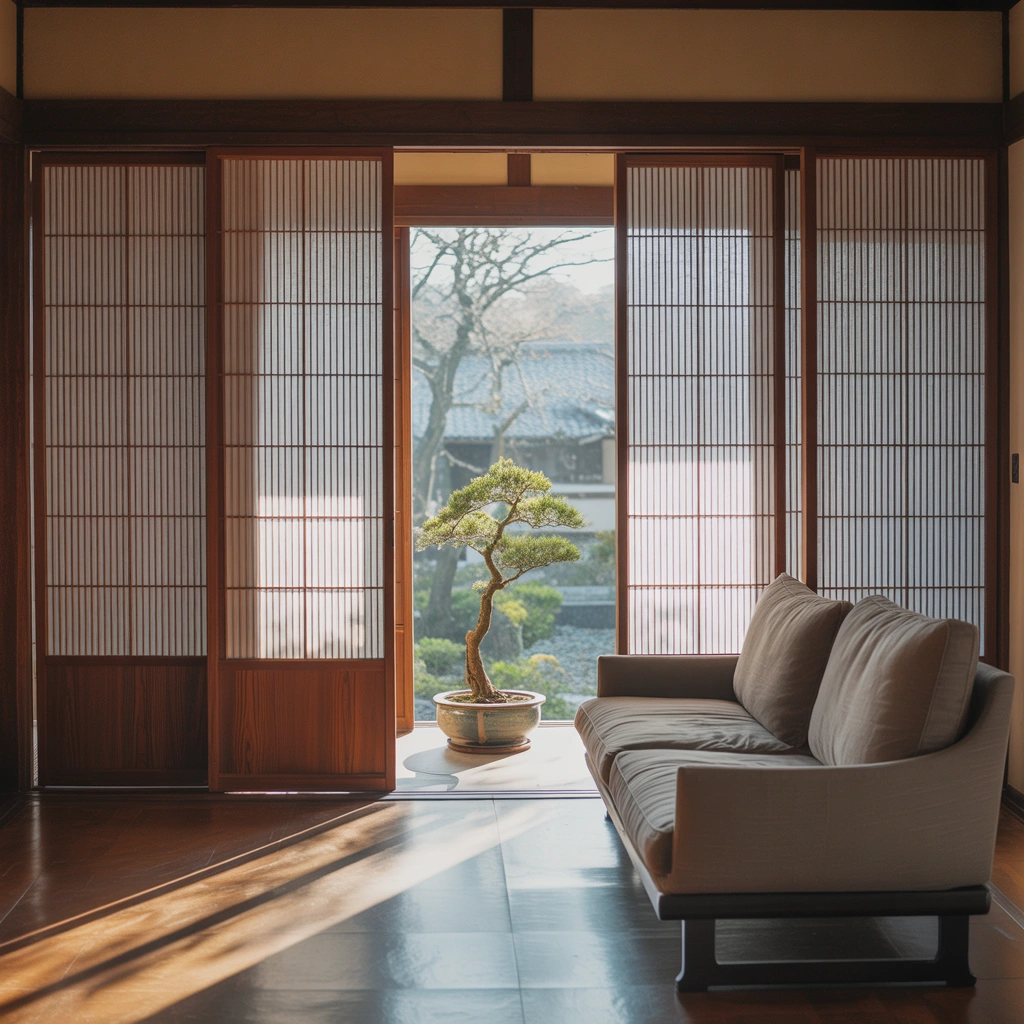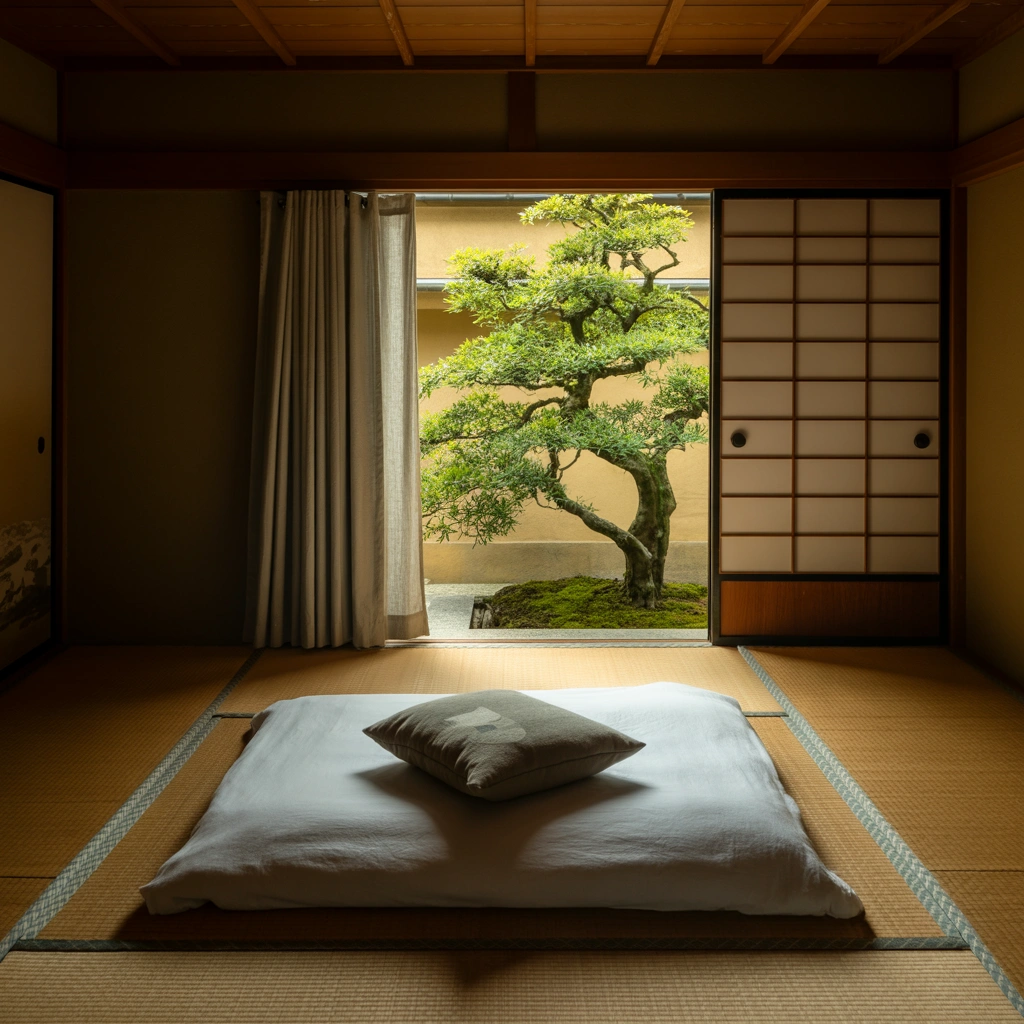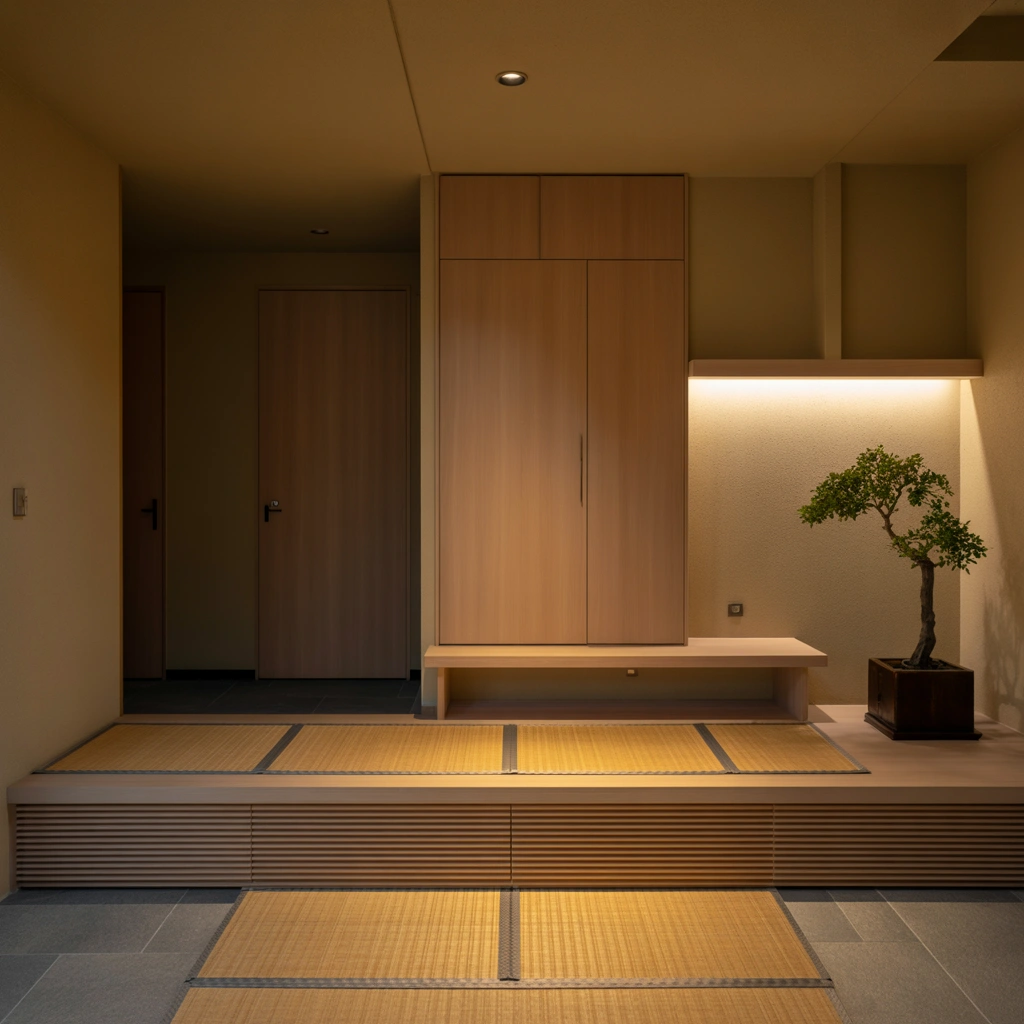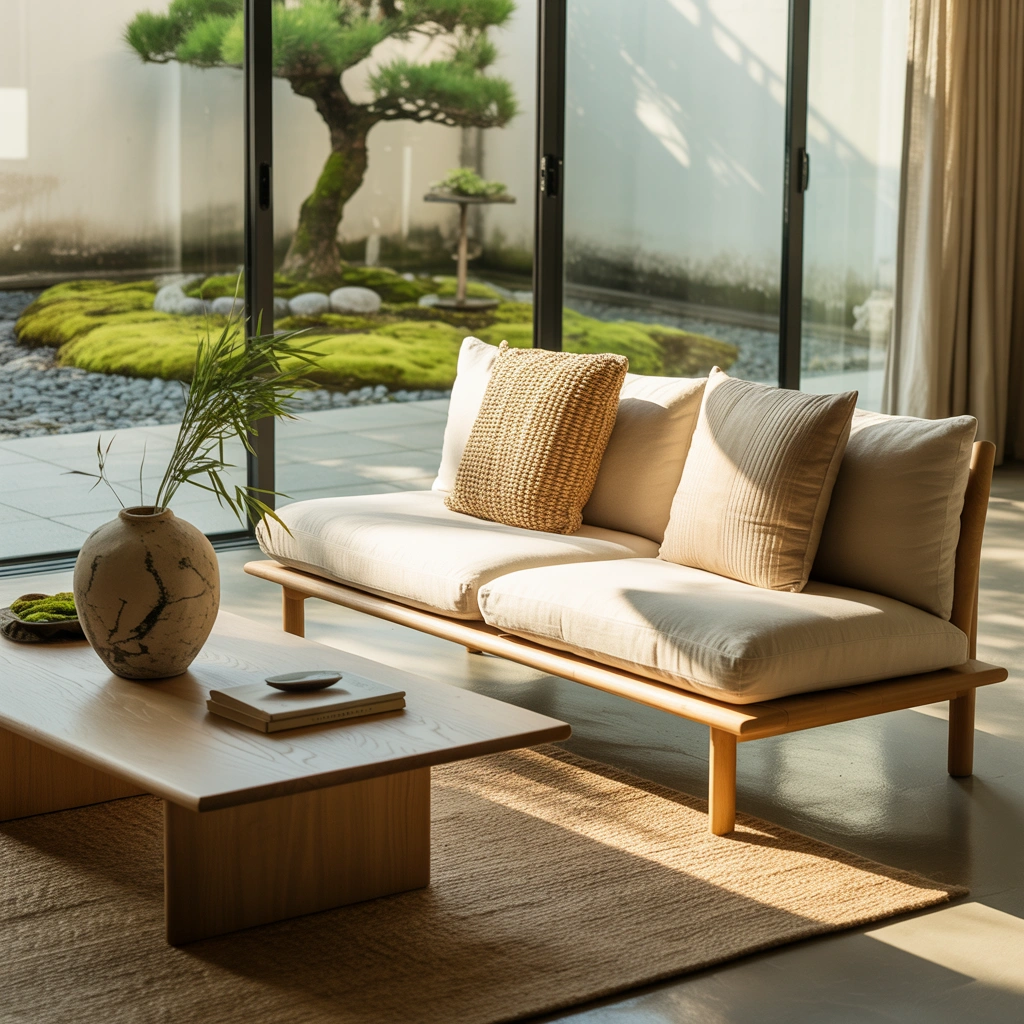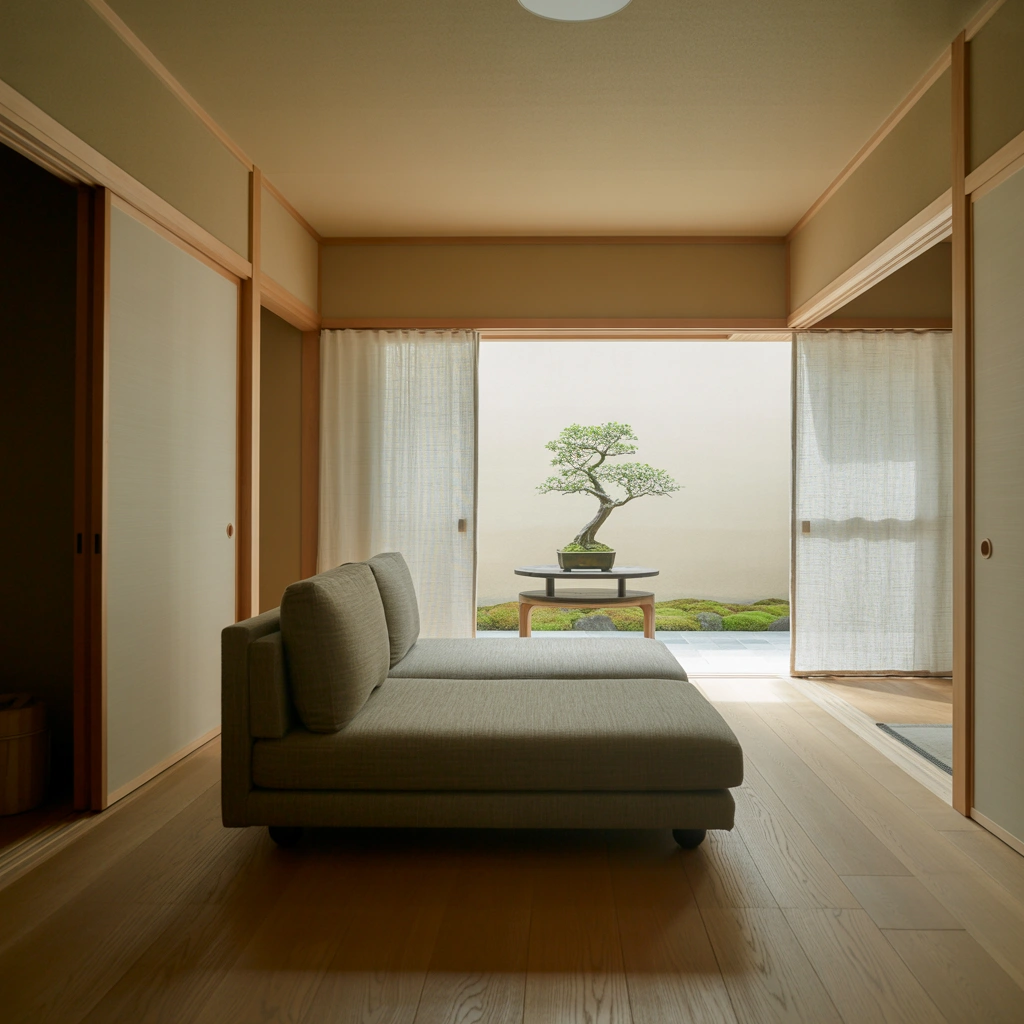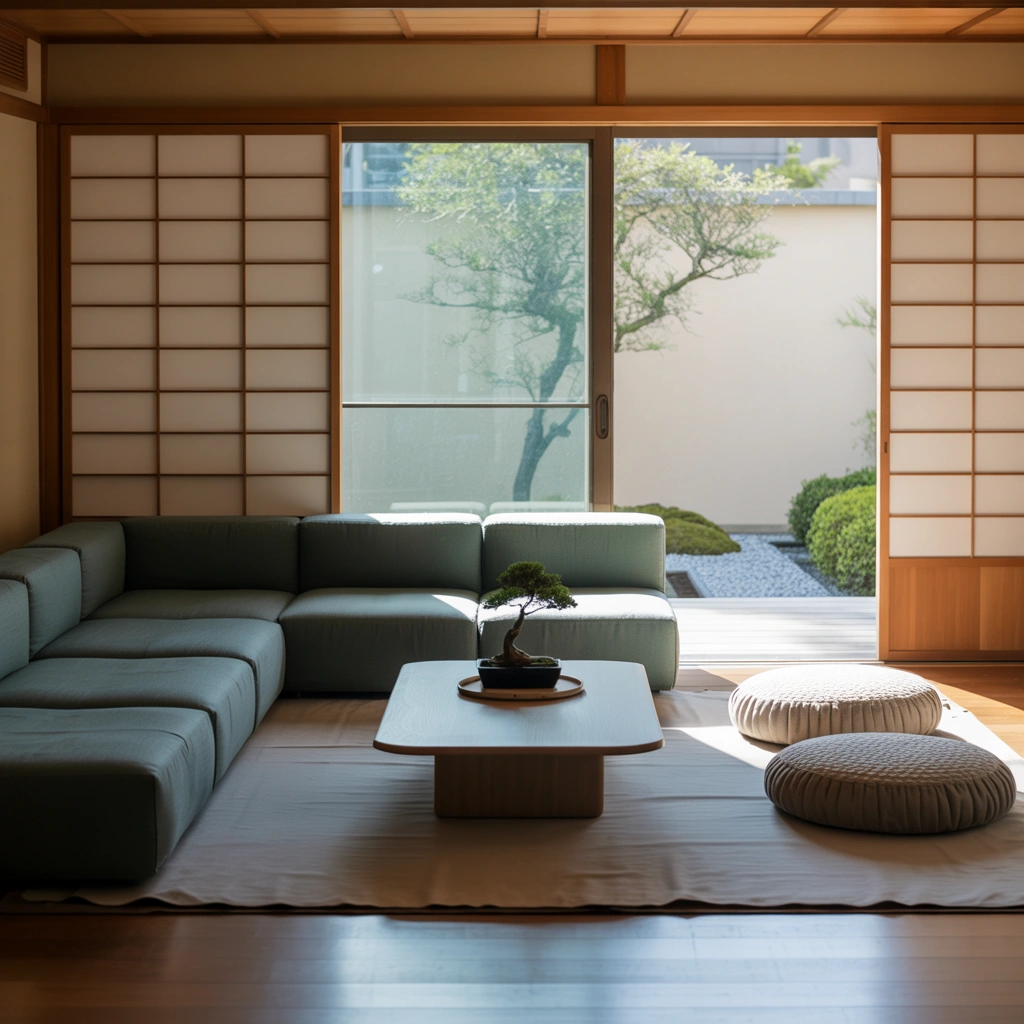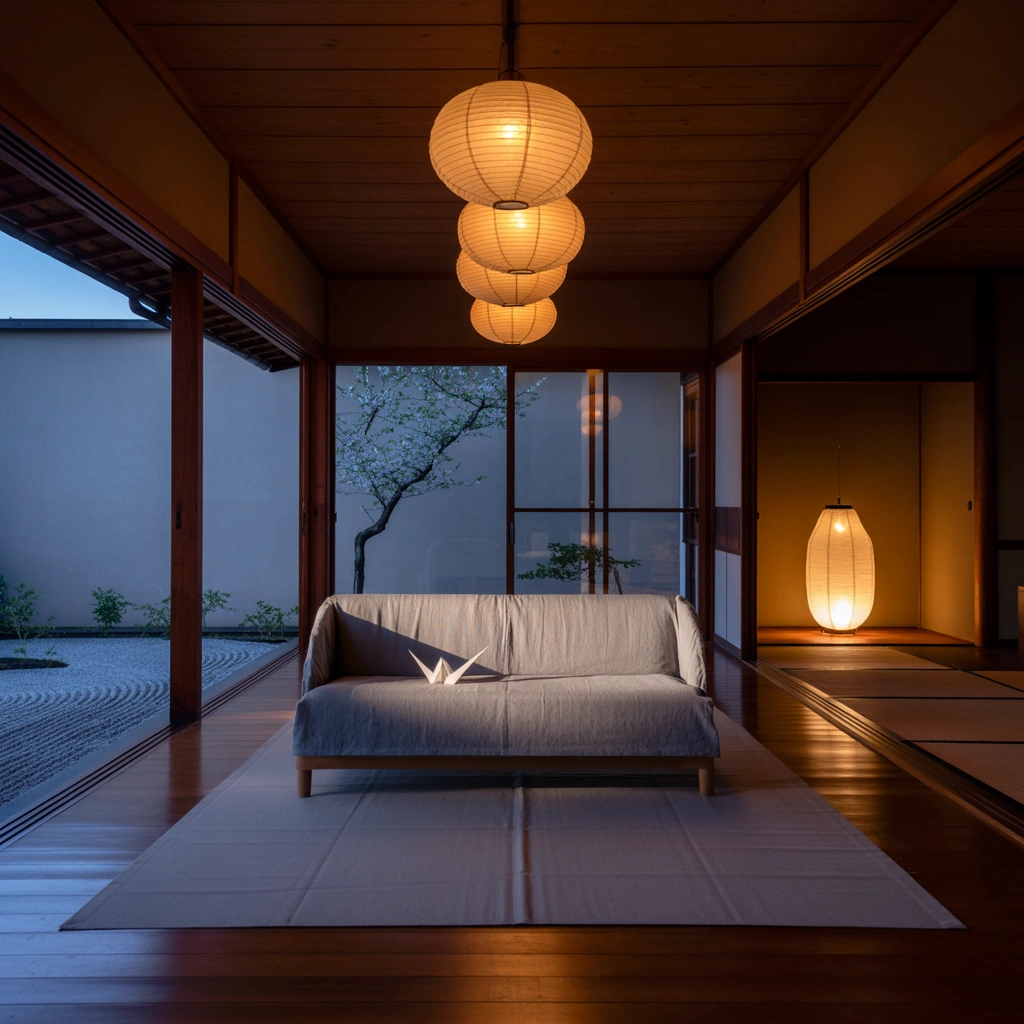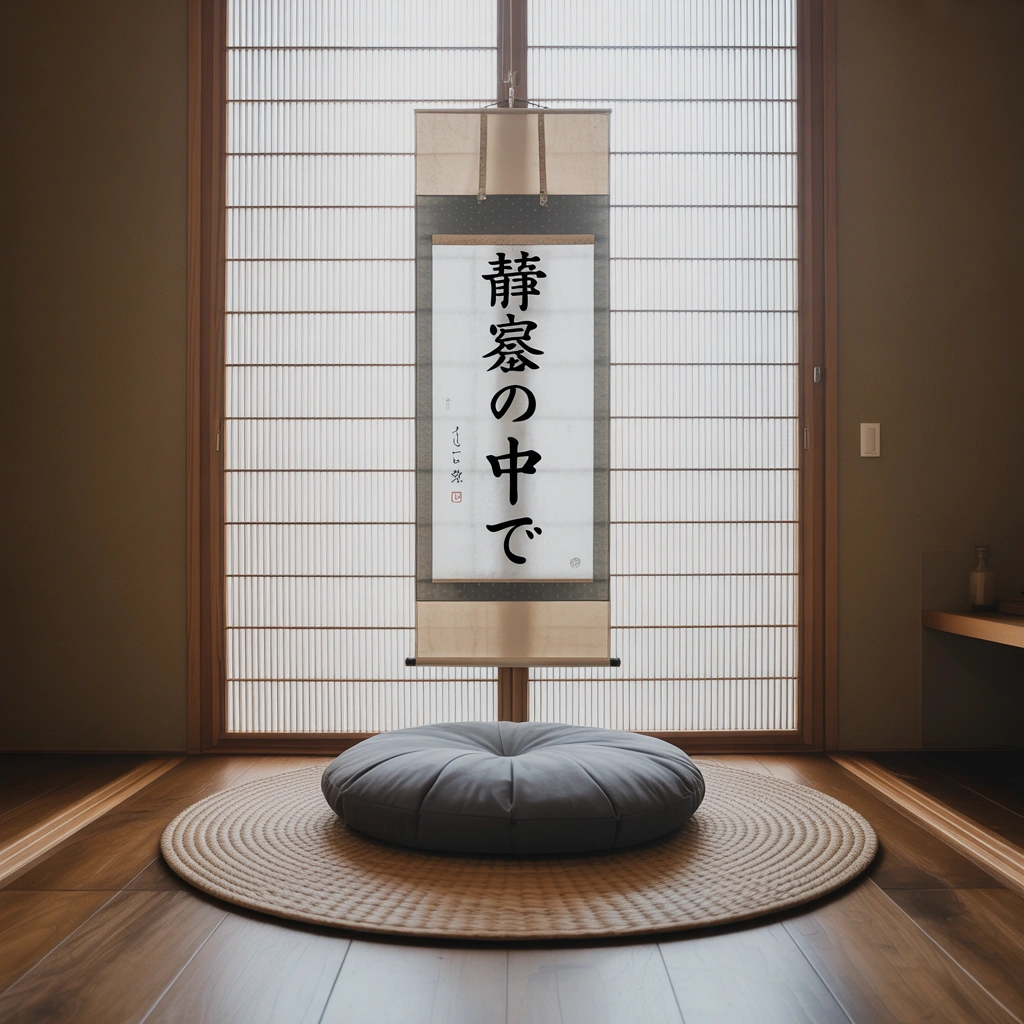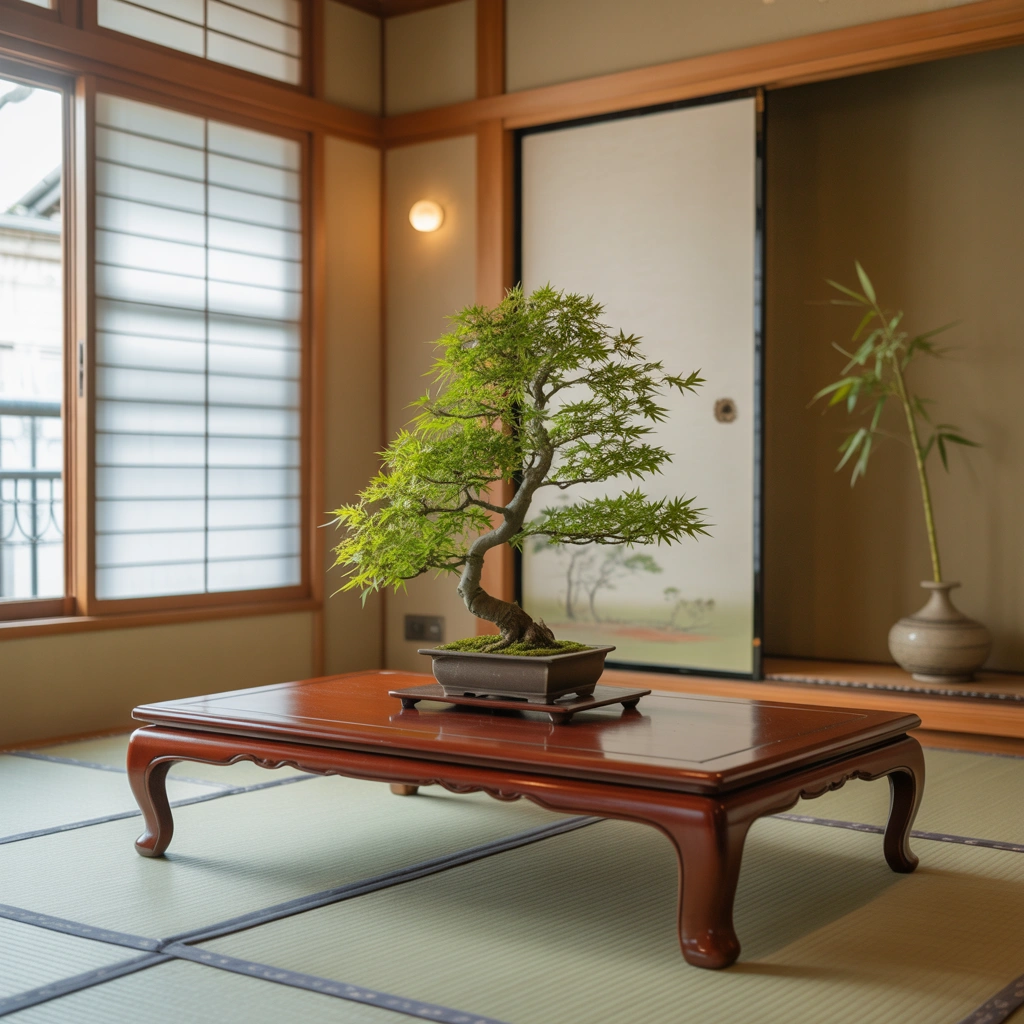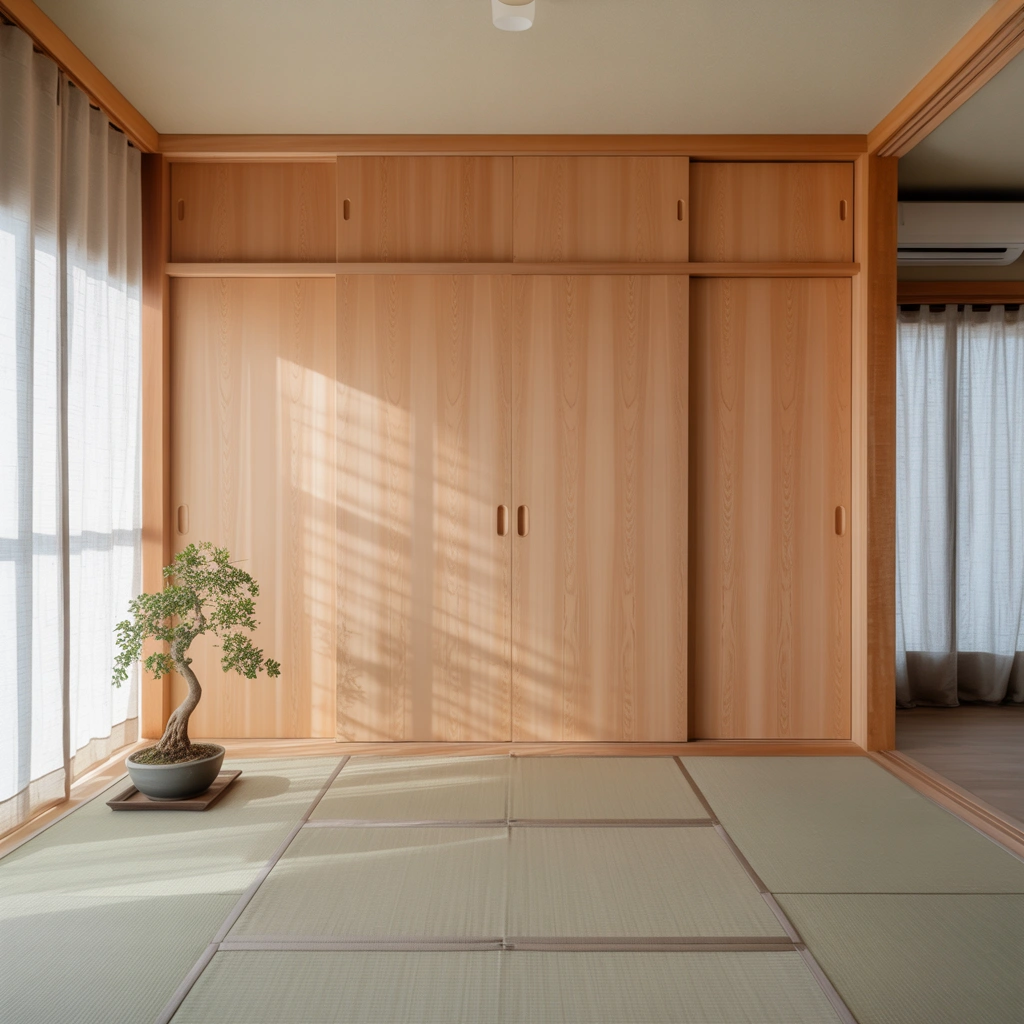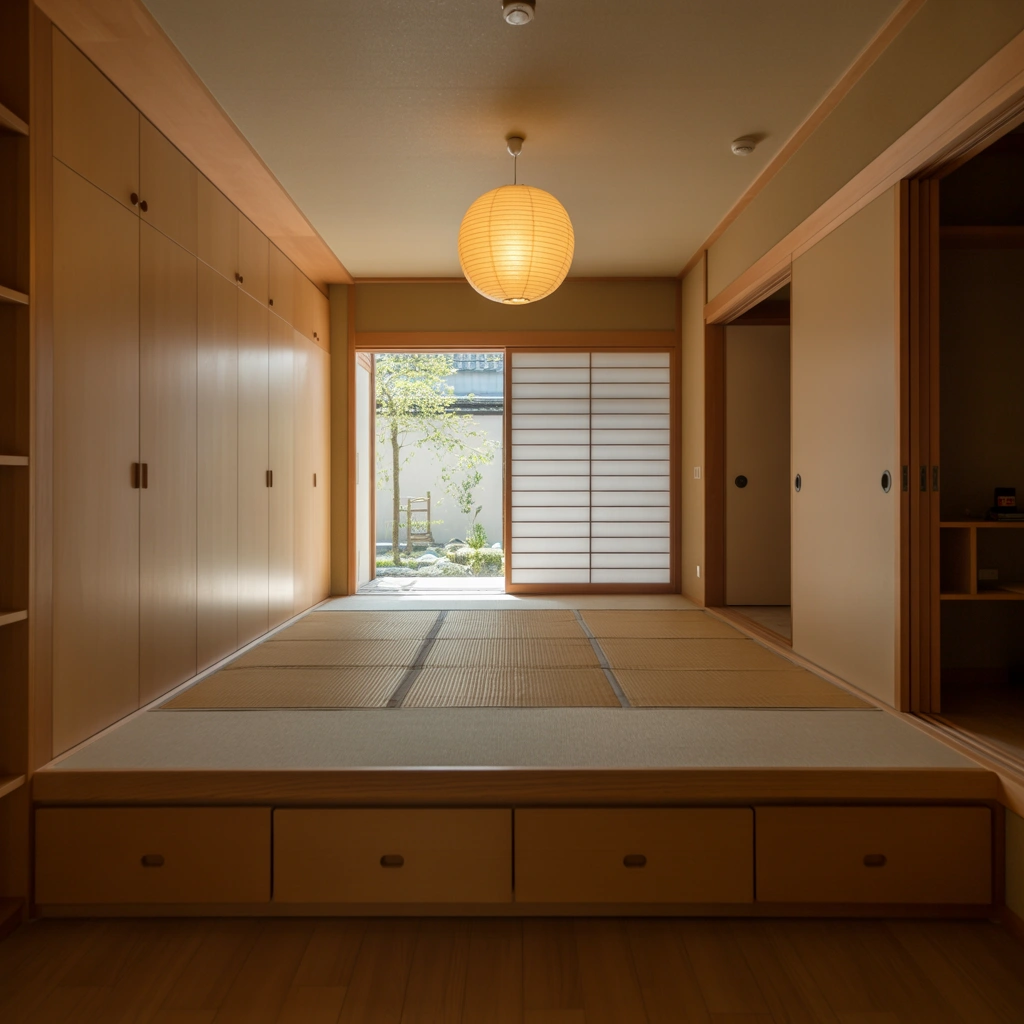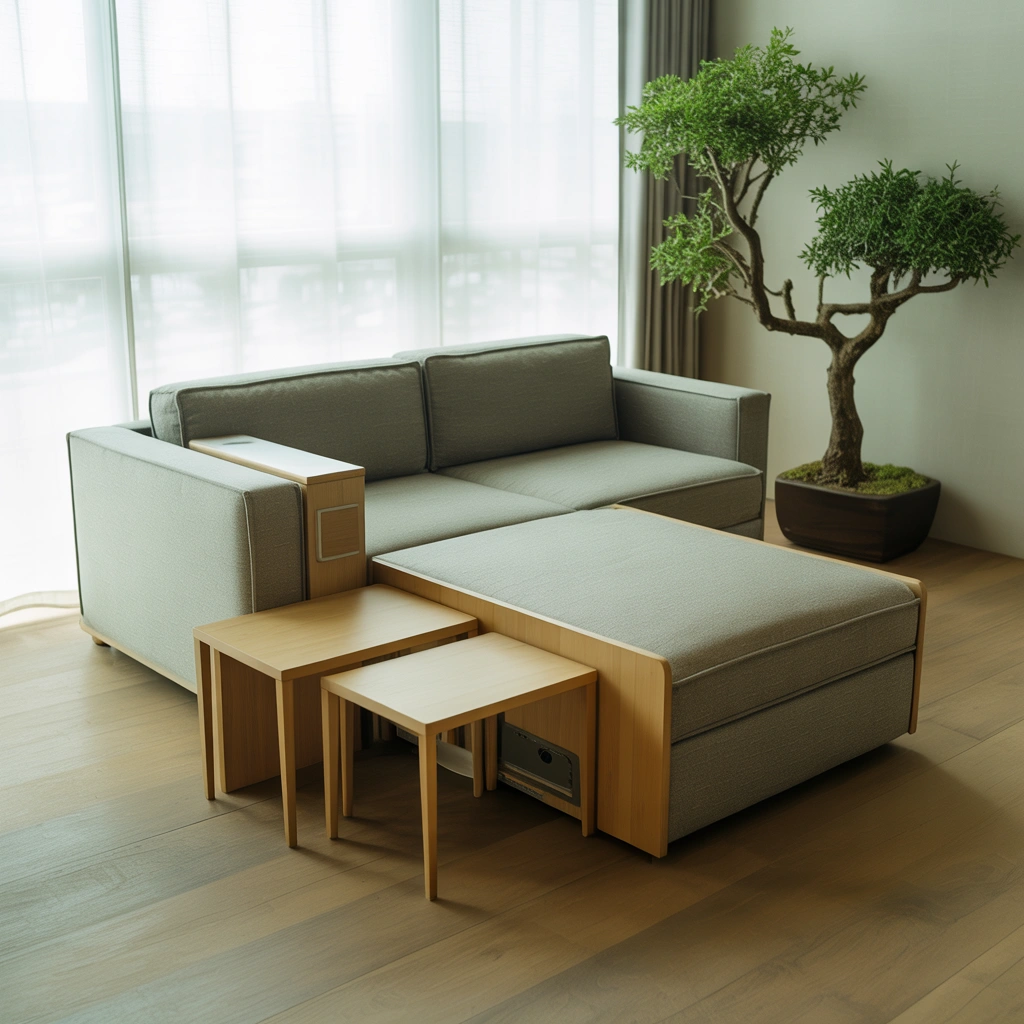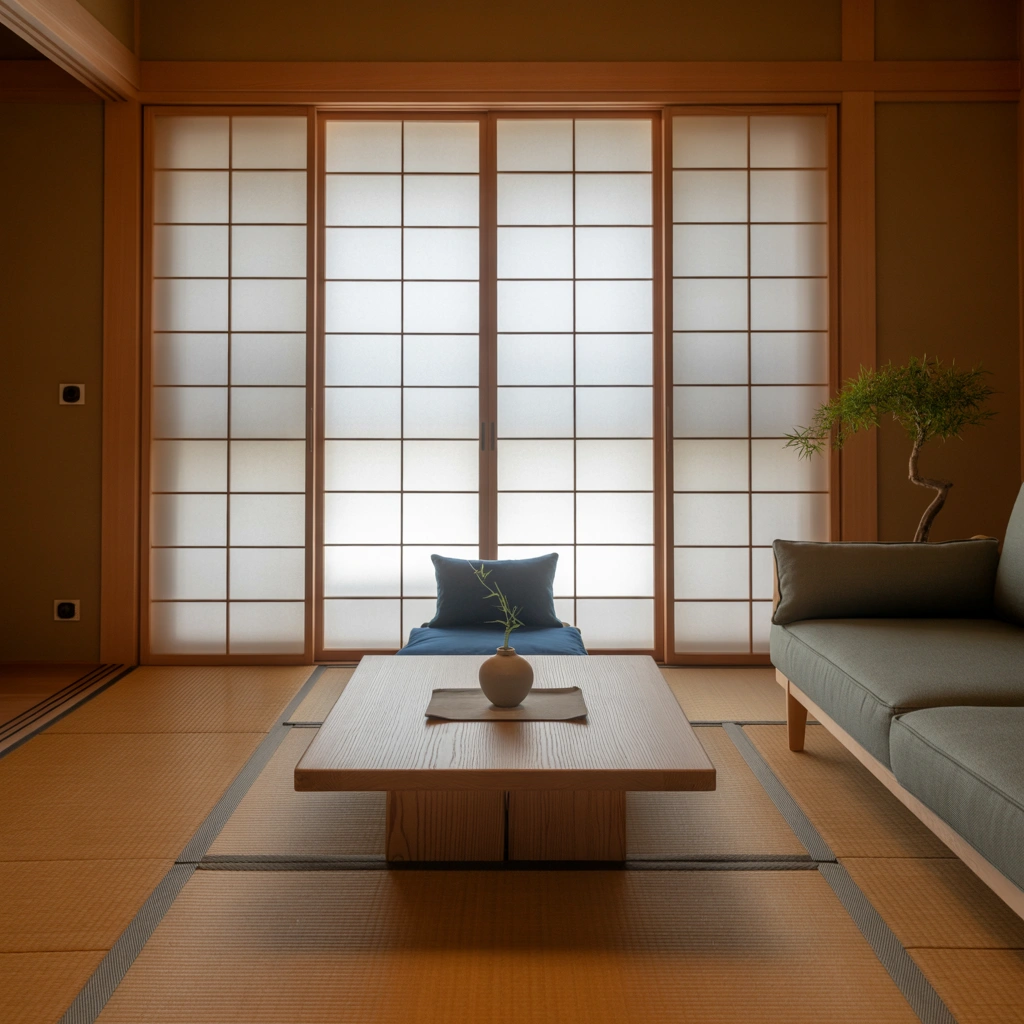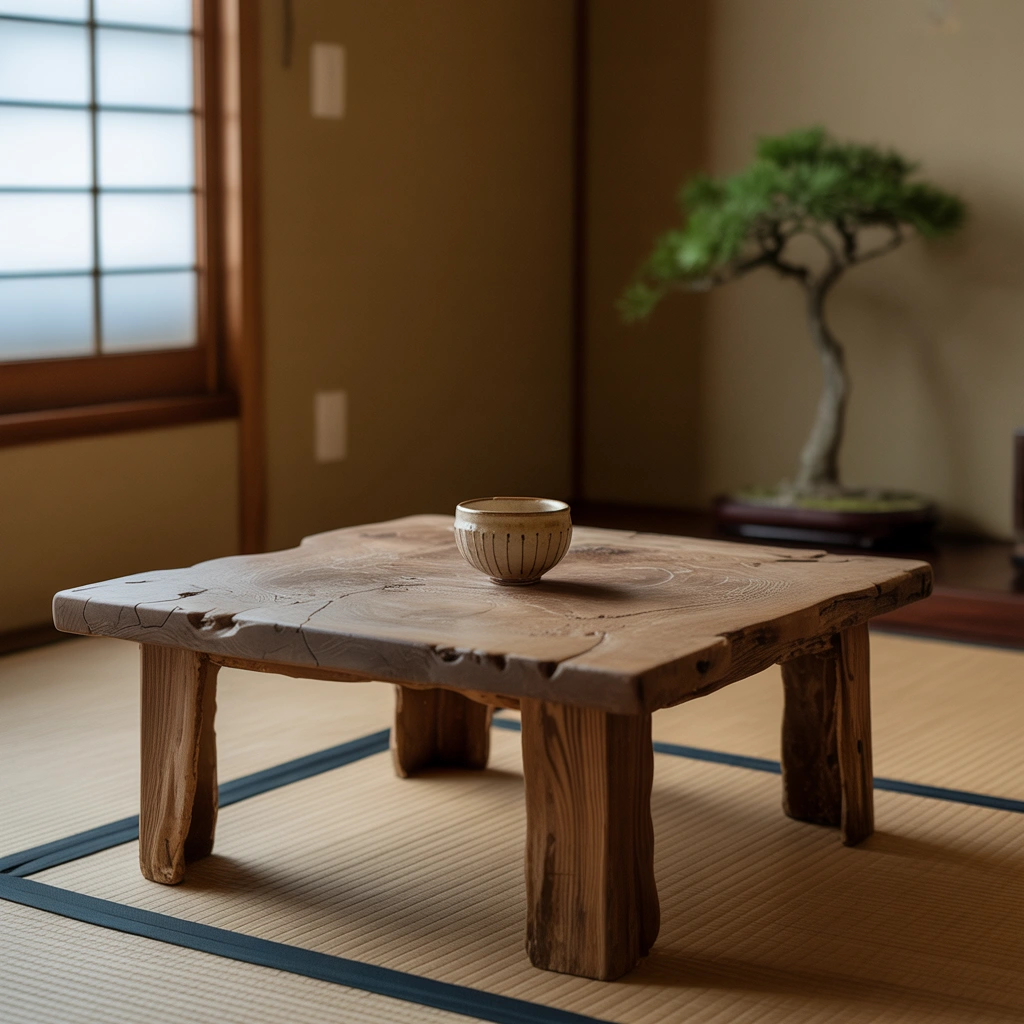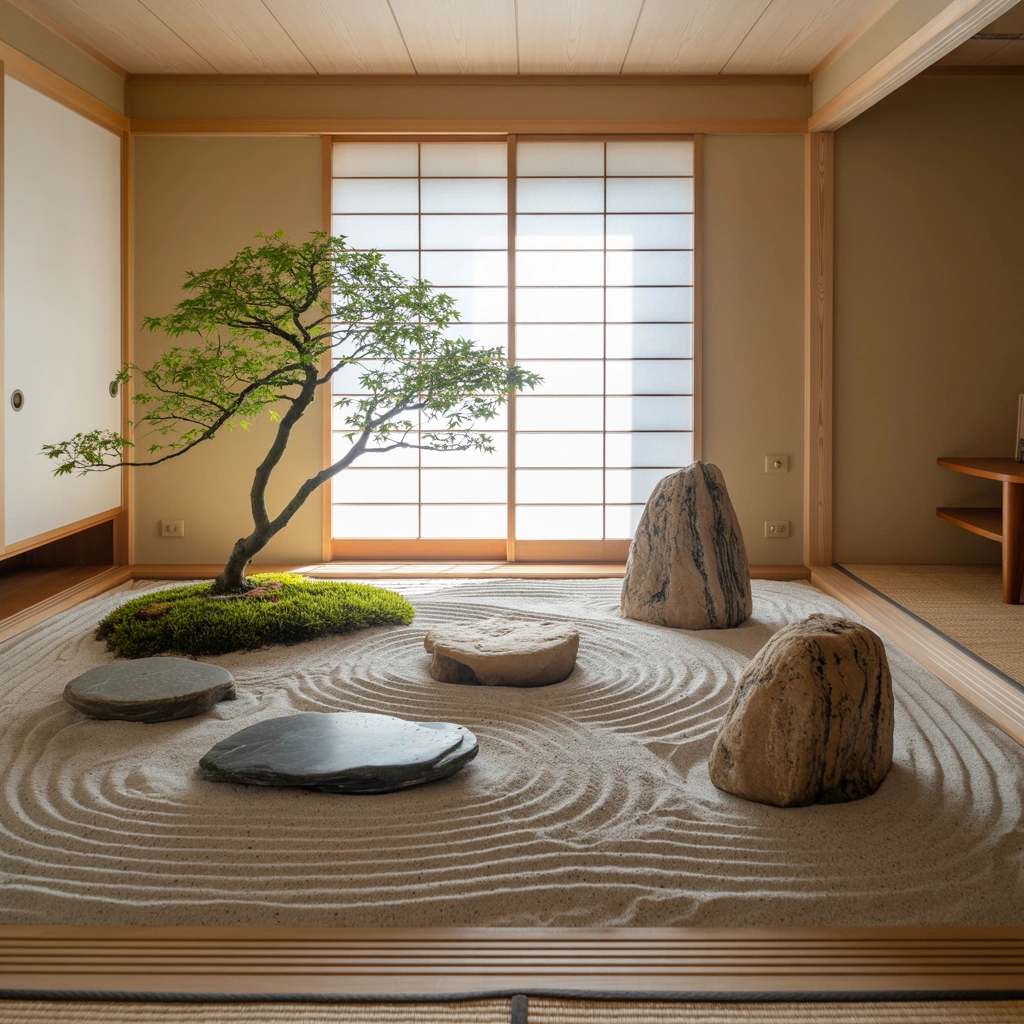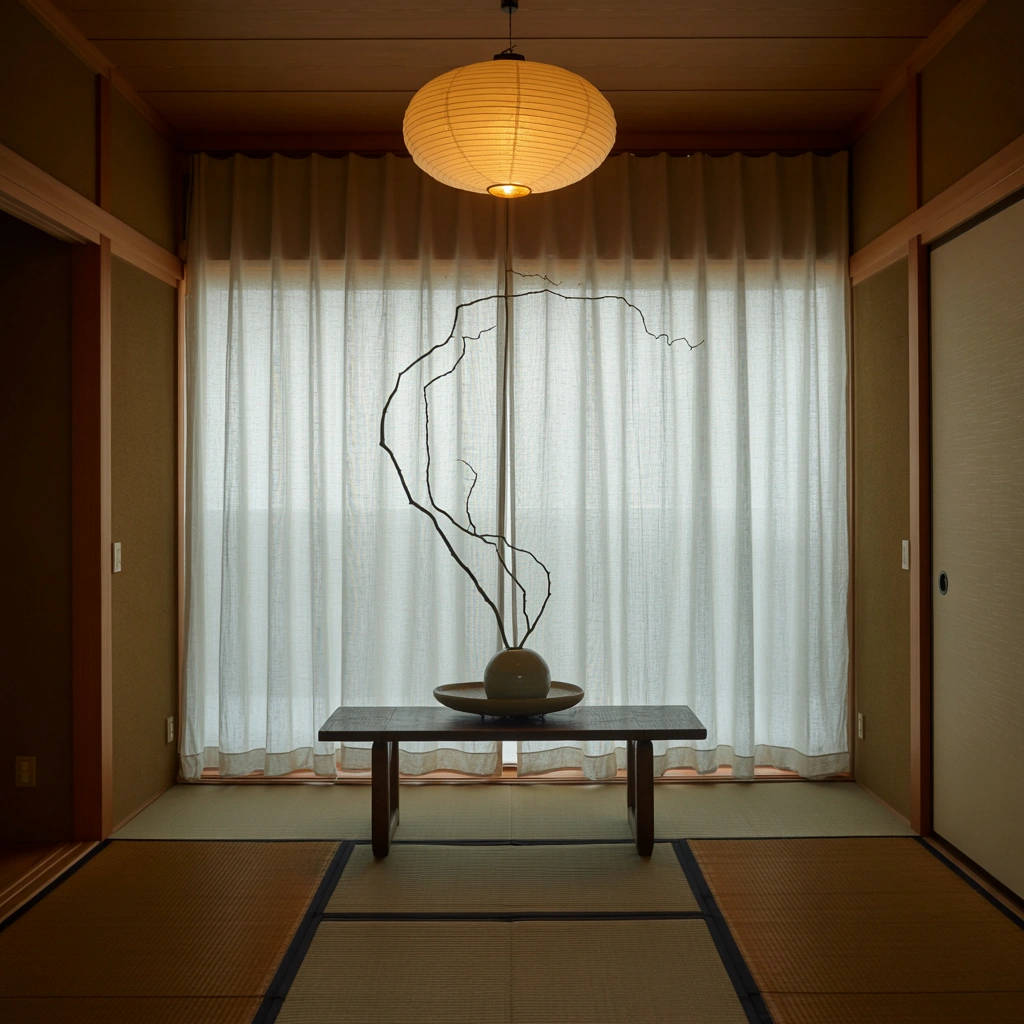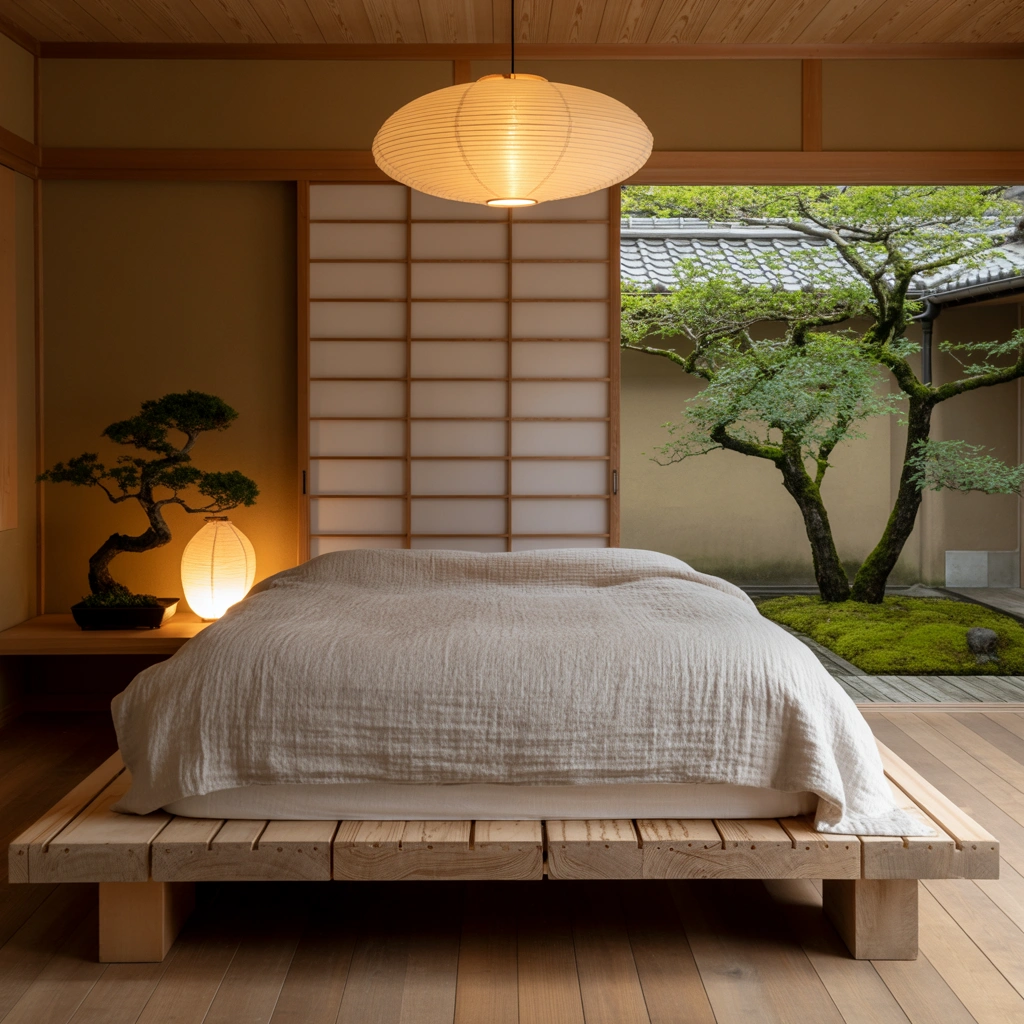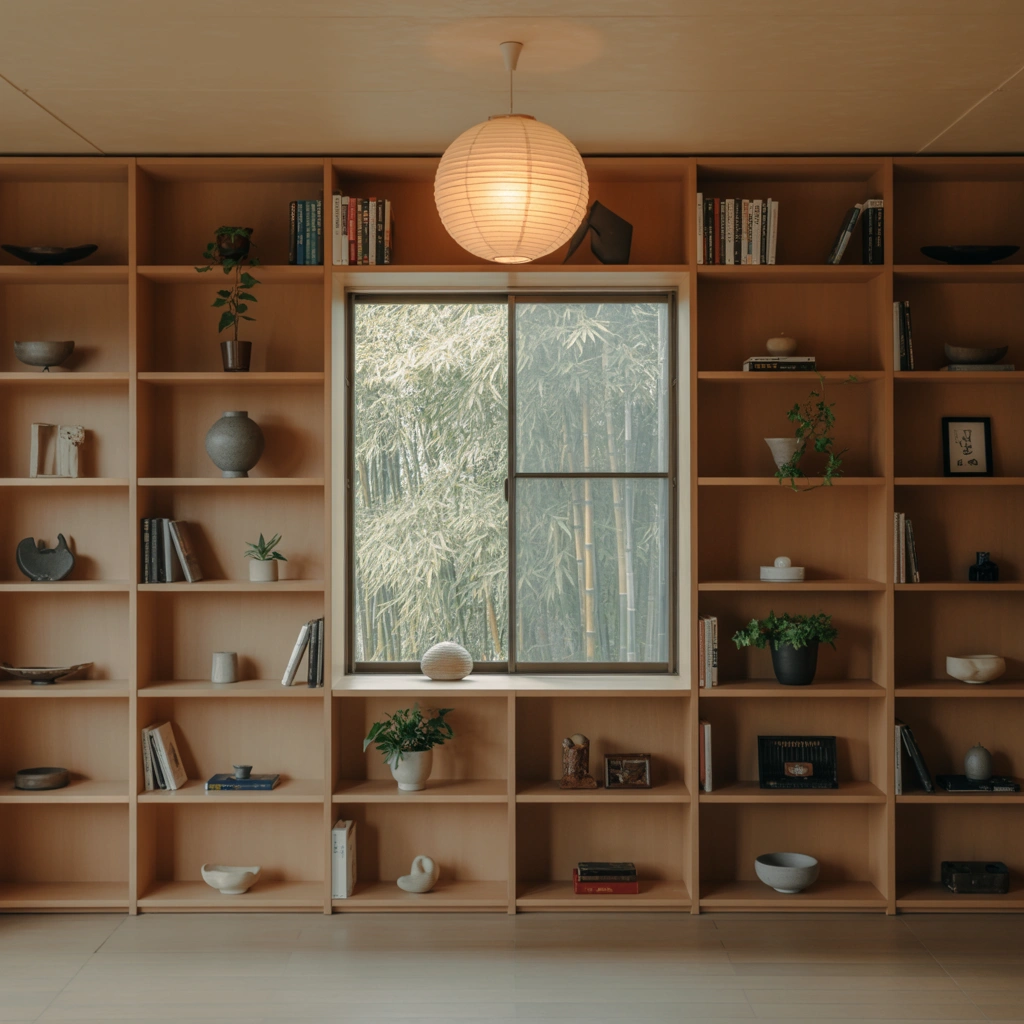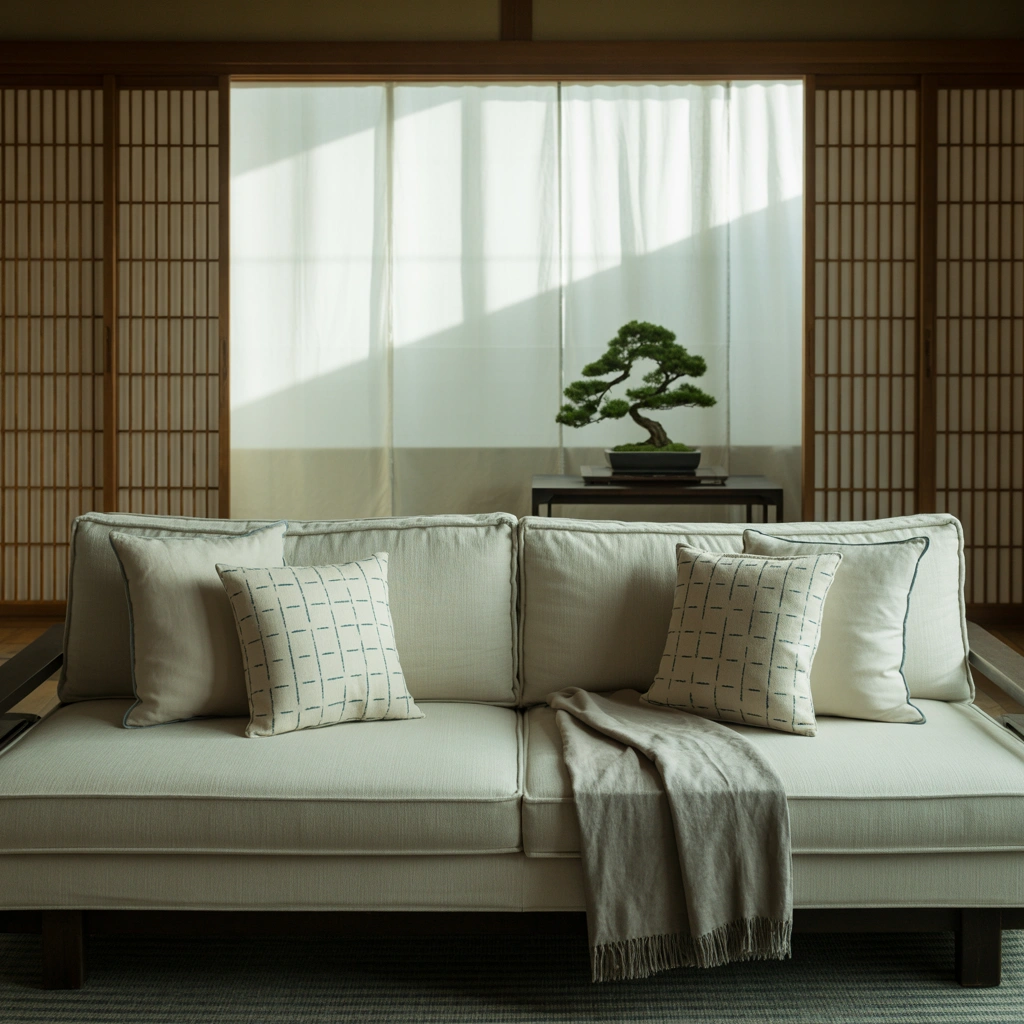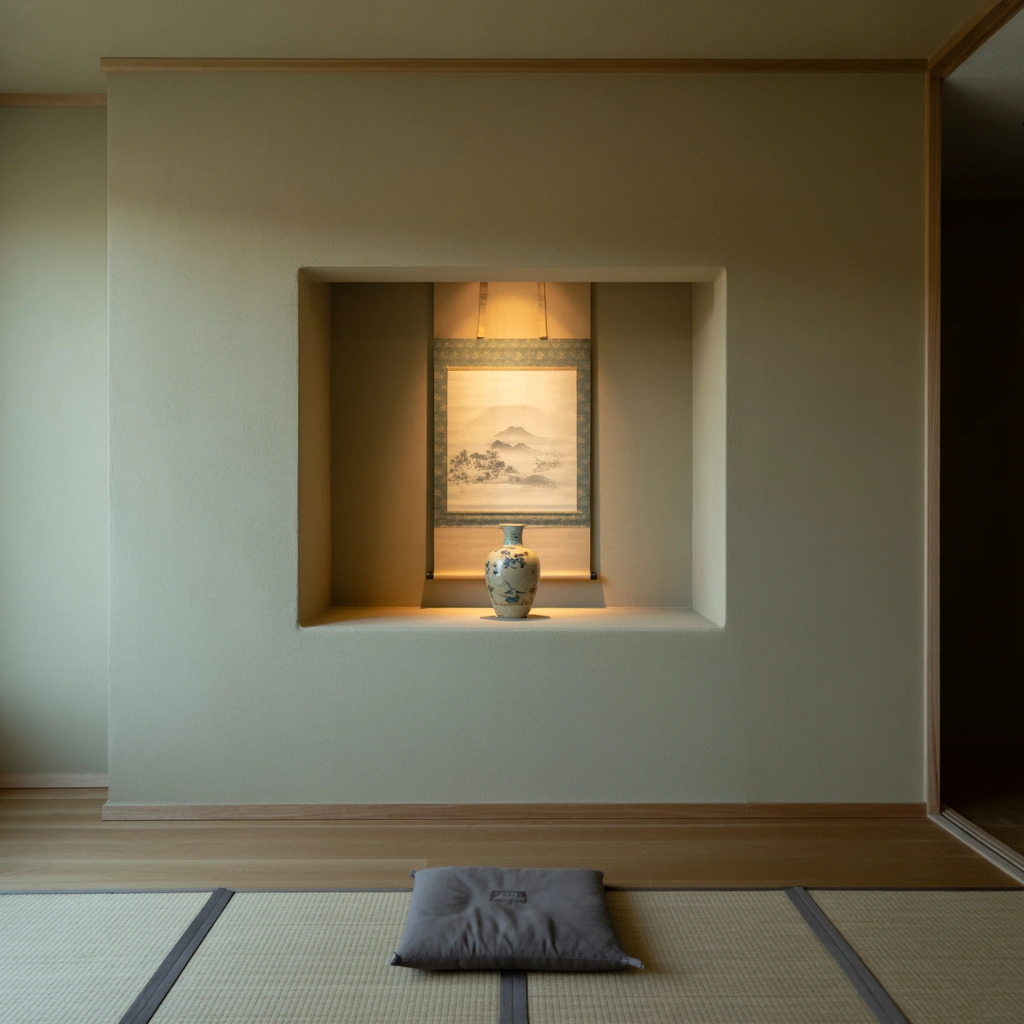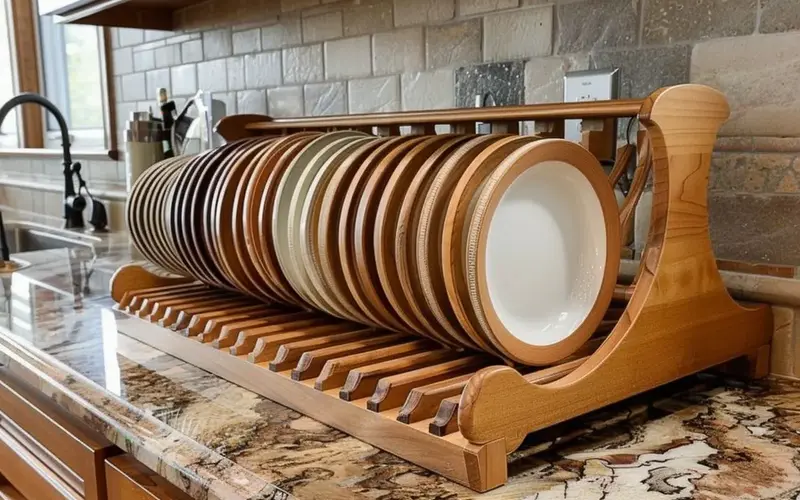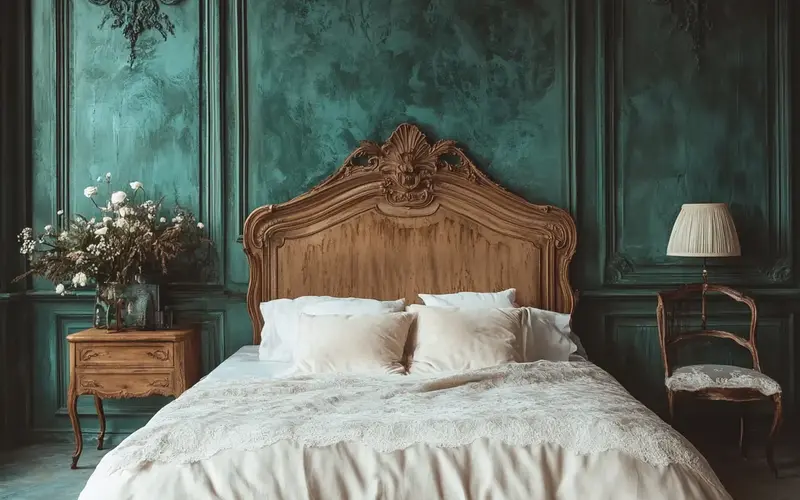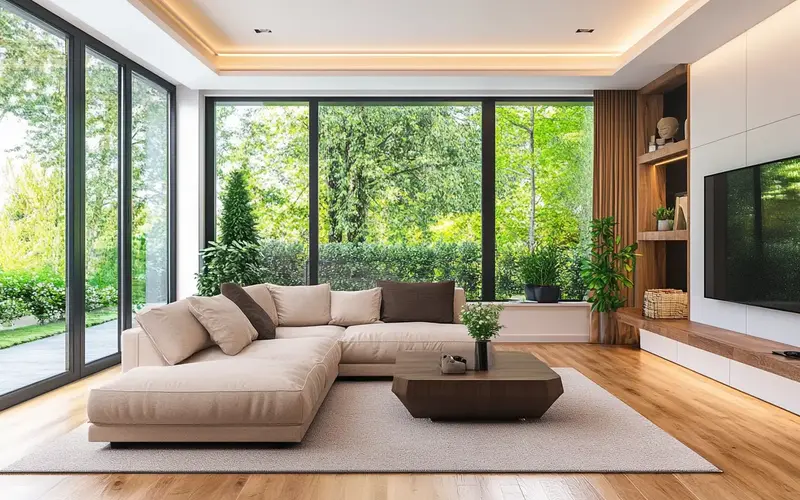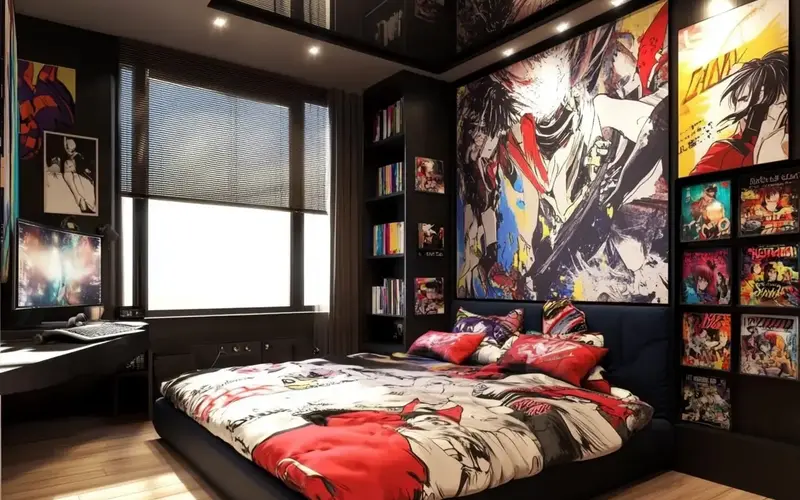Ever scrolled through Pinterest, swooning over those impossibly serene, perfectly uncluttered Japanese apartments, and thought, “How do they do that?” Well, grab your favorite mug, settle in, because we’re about to spill the tea (green tea, naturally) on how to bring that calm, cool, and collected Japanese aesthetic right into your own space, even if it’s currently a chaotic explosion of “stuff.”
Forget those stiff, formal design rules; we’re talking about practical, beautiful ideas that truly make sense for modern living, especially if you’re dealing with a smaller footprint. Ready to transform your humble abode into a haven of tranquility? Let’s dive in, but not in a cliché “dive into” way, more like a gentle, graceful wade into some truly inspiring ideas!
Embrace the Art of Minimalism with “Ma”
The Inspiration: You know that feeling when your space just feels… heavy? Like every surface screams for your attention, piled high with things you might need someday? Japanese design makes you want to hit the reset button. It’s not about having nothing; it’s about having everything in its right place and allowing for thoughtful, open spaces. The feeling of breathing room, of clarity, that’s what we’re after. Think about how much mental clutter disappears when physical clutter vanishes. It’s truly liberating.
Why it works: Minimalism, especially the Japanese concept of “Ma,” emphasizes intentional empty space, allowing elements to breathe and be appreciated. It’s about appreciating what you have, not accumulating more. This creates a sense of calm and order that even the most cluttered mind can appreciate.
Pro Tip: Start small. Pick one surface that drives you crazy (your coffee table, perhaps?) and remove absolutely everything from it. Then, slowly, mindfully, add back only one or two items that bring you joy or serve a clear purpose. You’ll be shocked at the immediate shift in energy.
Read More: Amazing Apartment Ideas for Couples: Beyond Basic
Introduce Shoji Screens for Dynamic Spaces
The Inspiration: Ever wished your living room could magically transform into a quiet reading nook or a guest bedroom at a moment’s notice? Traditional swinging doors often feel clunky and space-consuming, especially in smaller apartments. The thought of a more fluid, adaptable living area, one that truly works for your changing needs, is incredibly appealing. Shoji screens just look so elegant and functional.
Why it works: Shoji screens, with their translucent paper panels and light wooden frames, act as flexible room dividers. They allow natural light to filter through, maintaining an airy feel while offering privacy and the ability to redefine spaces. They simply slide away when you need an open plan, and slide closed when you desire separation.
Pro Tip: Consider shoji-inspired sliding doors for your bedroom or even to conceal a cluttered home office nook in your living area. They’re a stylish and practical alternative to traditional doors, saving precious swing space and adding an immediate touch of Japanese elegance.
Read More: 25 Budget Apartment Living Room Ideas for Decorating
Ground Your Space with Tatami Mats
The Inspiration: Remember stretching out on a cool, natural surface on a hot day, feeling completely connected to the earth? Modern flooring, while often practical, can sometimes feel cold and disconnected. The idea of bringing in a natural, textural element that also encourages a different way of living—closer to the floor, more mindful—is incredibly inviting. Plus, who doesn’t love a good scent of freshly woven straw?
Why it works: Tatami mats, woven from rush grass, provide a soft, natural, and aromatic flooring option. They offer excellent insulation and humidity control, creating a comfortable and breathable atmosphere. They also subtly encourage a low-to-the-ground lifestyle, promoting relaxation and a sense of grounding.
Pro Tip: If full tatami flooring isn’t feasible, try using individual tatami mats as area rugs in your living room or bedroom. Pair them with low-slung furniture or floor cushions for an authentic Japanese seating arrangement.
Read More: Best Minimalist Small Apartment Ideas: Unlock Your Apartment’s Potential
Design a Welcoming Genkan Entryway
The Inspiration: Stepping into your home should feel like stepping into a sanctuary, a clear separation from the outside world. But often, our entryways are just shoe piles and mail chaos. Imagine a designated spot where you shed the day’s dust, worries, and—most importantly—your shoes, before entering your peaceful haven. It’s about setting a mindful tone from the moment you arrive.
Why it works: The genkan is a recessed entryway area where you remove your outdoor shoes before stepping onto the main floor. This simple act promotes cleanliness, separates the “outside” from the “inside,” and signals a transition into a more serene environment.
Pro Tip: Even in a small apartment, you can create a pseudo-genkan. Use a stylish tray or a small bench with shoe storage underneath to designate a shoe-off zone. Add a simple wall hook for bags or coats to keep things tidy and intentional.
Read More: Best Korean Apartment Design Ideas: Unlock Your Inner K-Drama Aesthetic
Incorporate Natural Materials (Beyond Just Wood!)
The Inspiration: We spend so much time surrounded by synthetic materials and harsh, unnatural textures. Doesn’t your soul crave the warmth of wood, the coolness of stone, or the gentle touch of natural fibers? Bringing the outdoors in isn’t just about plants; it’s about a deep appreciation for the earth’s raw beauty. It’s about creating a tactile experience that connects you to nature, even in the middle of a concrete jungle.
Why it works: Japanese design heavily relies on natural materials like bamboo, rice paper, clay, linen, and untreated wood. These elements create a sense of harmony, authenticity, and calm, bringing the serene feeling of nature indoors. They age gracefully and tell a story, unlike their synthetic counterparts.
Pro Tip: Look for furniture made from solid, light-colored wood, and choose textiles like linen or organic cotton for throws and cushions. Introduce ceramic pottery, stone coasters, or even a woven bamboo basket for storage to add diverse natural textures.
Read More: 17 Creative Christmas Decor Ideas for Apartments
Curate a Neutral Color Palette
The Inspiration: Have you ever walked into a room with too many clashing colors and felt an immediate sense of overwhelm? It’s like your eyes don’t know where to land. The desire for a harmonious backdrop, a canvas that allows your carefully chosen pieces to truly shine, is undeniable. A serene color scheme just feels like a soft embrace.
Why it works: Japanese aesthetics favor a neutral and earthy color palette – think soft whites, creams, muted grays, and natural wood tones. This creates a calming and cohesive backdrop that allows other elements, like plants or a single piece of art, to stand out without competing for attention.
Pro Tip: Don’t be afraid to layer different shades and textures within the same neutral family to add depth without introducing jarring colors. For example, pair a creamy white wall with a linen sofa in a slightly darker off-white and a light oak floor.
Read More: 20 Cheap & Fun Apartment Halloween Decorations
Embrace Low-Slung Furniture
The Inspiration: When you walk into a room filled with towering furniture, it can feel imposing, almost intimidating. Have you noticed how much more expansive a room feels when the furniture sits lower to the ground? It opens up the vertical space, making even a tiny apartment feel grander and more connected to the earth. Plus, it just looks effortlessly cool.
Why it works: Japanese homes often feature low-profile furniture, such as floor cushions (zabuton), low tables (chabudai), and platform beds. This approach visually expands the room, creates a sense of openness, and encourages a relaxed, grounded posture.
Pro Tip: Replace a traditional coffee table with a low, minimalist version and add a few comfortable floor cushions. This simple change instantly transforms your living area into a more inviting and spacious zone.
Integrate Thoughtful Lighting
The Inspiration: Harsh overhead lighting can feel incredibly institutional, draining the warmth from any space. Think about the soft glow of a lantern, the way light filters through a screen, or the gentle ambiance of natural daylight. It’s about creating a mood, a feeling of calm, rather than just illuminating a room. Why do we settle for anything less than flattering, soul-soothing light?
Why it works: Japanese lighting emphasizes soft, diffused illumination, often using rice paper lamps or indirect light sources. This creates a serene and inviting atmosphere, avoiding harsh shadows and promoting a sense of tranquility.
Pro Tip: Opt for warm-toned LED bulbs (around 2700 K- 3000 K) and incorporate lamps with fabric or paper shades. Utilize floor lamps and table lamps to create layers of light, rather than relying solely on overhead fixtures.
Create a Designated Meditation Nook
The Inspiration: In our fast-paced lives, finding a moment of peace can feel like a luxury. But what if you had a dedicated space, even a small corner, where you could truly unplug, breathe, and simply be? The idea of a personal sanctuary, free from distractions, is incredibly powerful for mental well-being. It’s not just for yogis; it’s for anyone seeking a moment of calm.
Why it works: A small, dedicated meditation space encourages mindfulness and provides a personal retreat within your apartment. It doesn’t need to be grand; even a corner can serve the purpose. This fosters mental clarity and inner peace.
Pro Tip: Choose a quiet corner and place a comfortable cushion or a small tatami mat. Add a minimalist piece of art, a subtle plant, or a simple incense burner to enhance the calming atmosphere. Keep it free of clutter, so it truly remains a sanctuary.
Bring in the Greenery with Intent
The Inspiration: There’s something undeniably uplifting about bringing living things into your home. But sometimes, our plant collections become jungles, more stress than soothing. Japanese design reminds us that quality trumps quantity. It’s about selecting a few striking plants that truly add to the aesthetic, rather than just filling space. It’s like each plant gets its moment in the spotlight.
Why it works: Plants, especially bonsai trees or simple, elegant greenery like a snake plant or peace lily, connect your indoor space with nature. They purify the air and add a touch of living beauty without overwhelming the minimalist aesthetic.
Pro Tip: Choose one or two well-chosen plants in simple, natural pots. Consider their scale for your space. A single, perfectly pruned bonsai can have more impact than a dozen mismatched pots.
Utilize Sliding Doors for Storage
The Inspiration: Cluttered closets, overflowing shelves – it’s a universal struggle, isn’t it? Swinging closet doors eat up floor space, and open shelving can quickly look messy. Imagine storage that simply disappears, seamlessly blending into your walls, keeping everything out of sight but easily accessible. It’s the ultimate magic trick for small spaces.
Why it works: Just like room dividers, sliding doors (fusuma) are perfect for concealing storage areas. They eliminate the need for swing space, making them ideal for small apartments, and keep clutter neatly hidden behind a sleek facade.
Pro Tip: If you’re renovating, consider built-in closets with sliding doors. For renters, look for standalone wardrobes with a sliding mechanism or even use shoji screens in front of open shelving units for a quick, stylish cover-up.
Embrace Built-in and Hidden Storage
The Inspiration: Is there anything more satisfying than knowing everything has a place, and that place isn’t screaming for attention? The sheer genius of Japanese design in maximizing every inch, making storage part of the architecture itself, is truly inspiring. No more tripping over things; just smooth, clean lines and surprising functionality.
Why it works: Japanese apartments excel at clever, integrated storage solutions, from under-platform bed drawers to wall-mounted shelves that blend seamlessly. This keeps your space clutter-free and visually calm, a true hallmark of Japanese design.
Pro Tip: Look for furniture with hidden compartments, like ottomans with storage or coffee tables with drawers. Utilize vertical space with sleek, floor-to-ceiling shelving units, and always opt for enclosed storage over open shelves to maintain that coveted minimalist look.
Select Multifunctional Furniture
The Inspiration: When every square foot counts, single-purpose furniture feels like a luxury we can’t afford. Why have a guest bed and a sofa when one piece can do both? The idea of furniture that works as hard as you do, adapting to your needs throughout the day, is incredibly smart and efficient. It’s like getting two for the price of one, but without the infomercial vibes.
Why it works: In small Japanese apartments, furniture often serves multiple purposes. A futon can be a bed at night and stored away during the day, making a room serve as both bedroom and living area. This maximizes flexibility and floor space.
Pro Tip: Invest in pieces like a sofa bed, a dining table that extends or folds away, or nesting tables. These adaptable items ensure your apartment works efficiently for different activities without feeling cramped.
Prioritize Clean Lines and Simple Forms
The Inspiration: Ever feel overwhelmed by ornate, fussy furniture with too many decorative flourishes? It’s visually exhausting! The elegance of simplicity, the beauty of a pure form, is incredibly refreshing. It’s about letting the materials and craftsmanship speak for themselves, without unnecessary distractions.
Why it works: Japanese design celebrates clean lines, geometric shapes, and a lack of excessive ornamentation. This creates a timeless, uncluttered aesthetic that feels calm and sophisticated, allowing the eye to rest and appreciate each element.
Pro Tip: When choosing new furniture or decor, ask yourself: “Does this piece have a simple, clear purpose and form?” Avoid anything overly decorative or bulky. Think sleek tables, straight-backed chairs, and minimalist wall art.
Embrace the Wabi-Sabi Philosophy
The Inspiration: In a world obsessed with perfection and constant newness, the idea of finding beauty in imperfection, in the natural aging of things, is truly liberating. It’s about letting go of the need for everything to be flawless and instead, appreciating the unique character that time and use bestow. Who wants a sterile museum when you can have a soulful home?
Why it works: Wabi-sabi is a Japanese aesthetic that finds beauty in imperfection, impermanence, and the natural cycle of decay and renewal. It encourages appreciating the authentic, the worn, and the unique, creating a soulful and grounded space.
Pro Tip: Don’t toss that perfectly good ceramic bowl just because it has a tiny chip, or fret over a slight scratch on your wooden table. Instead, celebrate these marks as part of its story and character. Look for handmade items that inherently carry unique imperfections.
Cultivate an Indoor Rock Garden (Karesansui)
The Inspiration: Who needs a sprawling backyard when you can have a miniature landscape right inside your apartment? The calming act of raking sand, the quiet contemplation of perfectly placed stones – it’s like a tiny, personal oasis. It brings the meditative quality of nature indoors without requiring a green thumb (or much space).
Why it works: A small karesansui, or Japanese rock garden, uses sand, gravel, and carefully placed rocks to evoke natural landscapes. It provides a focal point for meditation and reflection, bringing a sense of outdoor tranquility into a small space.
Pro Tip: You can create a mini version in a shallow tray using fine white sand, a small rake, and a few smooth river stones. Place it on a low table or a sturdy shelf where you can observe it and occasionally rake the patterns.
Infuse Ikebana Flower Arrangements
The Inspiration: We often cram bouquets into vases, hoping for the best. But what if a single bloom, or a thoughtfully arranged branch, could be a work of art, a moment of profound beauty? Ikebana elevates flower arranging from a casual task to a mindful practice, where every element has purpose and meaning. It’s about appreciation, not just decoration.
Why it works: Ikebana is the Japanese art of flower arrangement, focusing on minimalism, asymmetry, and the natural beauty of individual stems or branches. A single, well-placed Ikebana arrangement can be a powerful focal point, bringing elegance and nature indoors.
Pro Tip: Instead of a large, dense bouquet, try arranging just one or two interesting branches or a single flower in a simple, elegant vase. Pay attention to the negative space around the elements; it’s just as important as the positive space.
Embrace Sustainable Practices
The Inspiration: Fast fashion, disposable decor – it’s all so fleeting, isn’t it? The thought of creating a home that respects the planet, that prioritizes longevity and natural resources, feels incredibly responsible and refreshing. It’s not just about what looks good; it’s about what feels good, knowing you’re making conscious choices.
Why it works: Japanese design often incorporates eco-friendly materials and practices, valuing longevity, repair over replacement, and minimizing waste. This promotes a mindful and responsible approach to home decor.
Pro Tip: Choose durable, high-quality pieces made from natural, sustainably sourced materials. Think about investing in items that will last for years, rather than trendy pieces you’ll want to replace quickly. Repair rather than replace whenever possible.
Utilize Vertical Space Creatively
The Inspiration: When your apartment lacks square footage, the only way to go is up, right? But “up” doesn’t have to mean cluttered walls. It’s about smart solutions that add storage or display without making the room feel like a stacked box. Imagine shelves that seem to float, or cleverly integrated nooks that disappear when not in use.
Why it works: Small Japanese apartments master vertical living. They use tall, narrow shelving units, wall-mounted storage, and even built-in nooks to maximize space without encroaching on the floor plan.
Pro Tip: Install floating shelves to keep the floor clear. Look for tall, slim bookcases or custom-built-ins that go all the way to the ceiling to draw the eye upward and utilize often-forgotten space.
Incorporate Japanese Textiles
The Inspiration: The texture and patterns of a simple textile can add so much warmth and character to a room, sometimes even more than bold colors. Japanese textiles, with their subtle beauty and rich history, offer a wonderful way to introduce visual interest without disrupting the calm aesthetic. They’re like whispers of tradition in a modern space.
Why it works: Japanese textiles, such as those with subtle geometric patterns, indigo dyes, or natural textures like linen and silk, add warmth and visual interest. They can appear in cushions, throws, or even as framed art.
Pro Tip: Drape a beautiful, subtly patterned throw over your sofa, or use a few cushions with Japanese-inspired motifs. You can also frame a piece of fabric with a traditional pattern to create unique wall art.
Create a “Tokonoma” Display Alcove
The Inspiration: Have you ever felt like your decorative items just get lost in the shuffle? A traditional Japanese home gives its most cherished objects a special place, a moment to truly shine. It’s about elevating a single piece, giving it the respect and attention it deserves, rather than having a dozen competing trinkets. It’s about less, but better.
Why it works: A tokonoma is a recessed alcove in a Japanese room, traditionally used to display a hanging scroll, an ikebana arrangement, or a single piece of art. It creates a dedicated focal point, encouraging appreciation for a few carefully chosen items.
Pro Tip: Even without a built-in alcove, you can mimic this idea. Designate one small wall-mounted shelf or a clear, uncluttered surface where you display just one or two rotating items. This could be a vase with a single flower, a beautiful piece of pottery, or a meaningful framed photograph. Change the display seasonally to keep it fresh and inspiring.
Final Thoughts
There you have it! Twenty-one (and one extra, because we’re generous) ways to infuse the peaceful, thoughtful beauty of Japanese design into your apartment. Remember, it’s not about perfectly replicating a traditional Japanese home; it’s about taking inspiration from these timeless principles and making them work for your life and your space.
So go ahead, experiment, declutter a little, embrace those natural textures, and create your very own slice of Zen. Your future self (and your less-cluttered brain) will thank you!
